Day Trip to Balk-I-Sharif
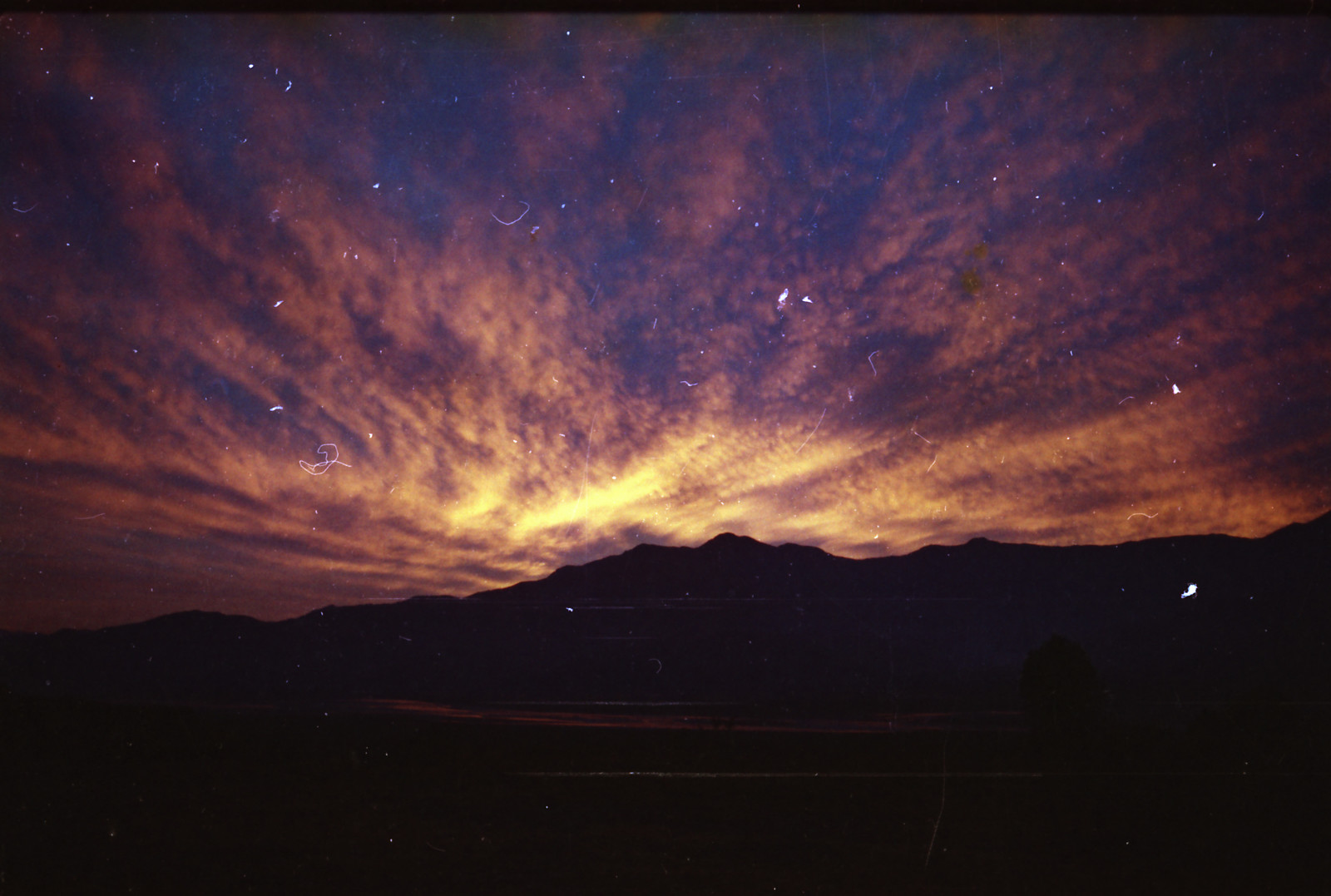
Copyright Richard Siegel – Cannabis Farmer
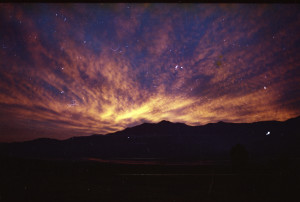
The sun’s relentless ascent turned the dark night skies a bloody red as the new day approached; the journey lay ahead. Deep in the inner recess of my mind was hidden some obscure knowledge: fragmented paths of history swirled around. Visions that would appear to me this day.
Shaking off the previous night’s debauchery from my just wakening brain, teetering in and out of the dreamy state from the still charas- filled bloodstream, I stood watching the violet glow move through a collage- like color spectrum on still strips of dark clouds, striping the sky like the Bengal’s back. The dark cloud tops steadily loosing ground to colored light as the day approaches. The clouds ablaze like logs on a fire. Chai was served, and squatting on the front wooden porch I started to contemplate the day, mind rising to the task, just as sure as the sunrise. The white Mercedes was ready, still covered in the cool dew of the night, dramatically silhouetted against our simple clay brick and wood abode, waiting patiently in the courtyard.
Today it is off to Balkh-I-sharif. This is a huge part of Marco Polo history and the silk routes. This is Bactria. Rightfully called the “Mother of All Cities,” eat your heart out New York! We are talking Persian Empire; we are talking Alexander the Great! This is pre-Christ stuff, taking us back to a time lost. My years spent exploring the ancient routes were winding their course to this center of our historical humanity.
I set off with an entourage of friends to see Balkh and re-live the legends I am about to share. Balkh is about 20 clicks west of Mazar and the slick military road unrolled in a fashion that let the Benz cruise along effortlessly at great speed. The countryside was nothing more than dusty fields and dried leafless hills. The road unraveled itself, flat and straight, designed to move tanks around the country, a big white Mercedes was indeed a rare site.
Driving along the road outside the city you could see small villages scattered in the distance on each side where groups of families lived and farmed peacefully. This was, of course, early September 1978 and the time of the harvest, when the day’s sun is still hot but the nights bring forth a frosty chill. It is dry; it is once again a period of drought for the Afghans. We cross many dried- out riverbeds and the dust is everywhere and sometimes 12 inches deep. Cows and animals stroll about in the hot early autumn sunlight.
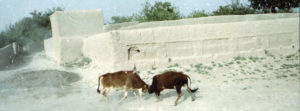
I pull over to photograph a bullfight. No, not a Spanish type fight, a couple of bulls were having it out over something and the battle blew up enough dust to note from the road. We stood behind a wall to observe this manifestation. The wall was about 4 foot tall and about 2 foot thick, of typical mud and red sandstone like the rest of the country. The bulls went at it and the dust was churning up in a cloud around them. I think the whole country is so dry it is at least 6 inches deep in dust right now. The bulls are exhausted and breathing slime, which is all over their faces and dripping to the ground. Man, sick stuff. Some chickens join in the fight action, looks like a territorial feud fueled by the excitement. It is hot, the sun is high and we tire of the chickens and bulls, setting off again.
The smell of harvest is in the air, and my mind kept drifting off to Aqcheh. The next day’s journey was to be in those fields nearby where we were set to join in the harvest. Visions of glorious buds on the bush, the piles and tons of finished products, the sweet pungent smell of fresh bud were churning through my mind.
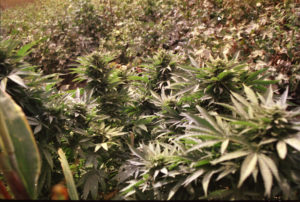 Suddenly I am snatched back to reality as a sign comes up signaling me that Balkh-I-Sharif was off to the right. Bumping now down a rutted dusty road that looked well traveled by the famous Afghan- painted trucks, we approached this once great city, which is now just a tiny village. Village life here was about the same as Mazar; the stalls had much cotton and cloth and the carpet traders were there in the back streets getting shipments ready for Pakistan. We stopped for some chai and directions to the legendary tomb of Baba Koo Mustaan. Our goal was close, but further down the road, as the real Balkh was abandoned hundreds of years ago. That was where we were heading.
Suddenly I am snatched back to reality as a sign comes up signaling me that Balkh-I-Sharif was off to the right. Bumping now down a rutted dusty road that looked well traveled by the famous Afghan- painted trucks, we approached this once great city, which is now just a tiny village. Village life here was about the same as Mazar; the stalls had much cotton and cloth and the carpet traders were there in the back streets getting shipments ready for Pakistan. We stopped for some chai and directions to the legendary tomb of Baba Koo Mustaan. Our goal was close, but further down the road, as the real Balkh was abandoned hundreds of years ago. That was where we were heading.
Why Baba Koo, you ask? Baba Koo is the great Afghan Saint that is credited with the discovery of charas. That is, for the ‘peanut gallery’ the Afghan word for hashish.
We were directed to the roads near the entrance to the tomb. The tomb is surrounded by ruined walls, as is the whole city. The walls are tall and foreboding in their regal ruin, standing like a monument to a once great people, or as a warning not to tread here again. Built of that red dust and rock like Petra, it seems to just rise from the ground like it grew there.
The entrance is framed in old tree trunks, eroded from time, yet embedded into the thread of history and the fiber of dirt, rock, and clay that made up the walls of this primitive structure. The tomb is darkly lit through slit- like windows that have been closed off with the typical Afghan green wooden shutters, letting only a small slice of light in through a cut out crescent. The light streaming in through muslin cloth hung rather haphazardly from the top of the crude entrance added enough illumination to see.
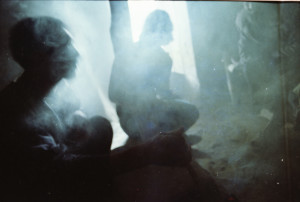
Inside, sitting in a circle, are a group of Afghan men in their swarthy local garb. Through the darkness they were not really recognizable, their beards covering most of their faces. Situated in the center was a rather large Hubble-Bubble. One man was working rather feverishly on pressing up a bit of charas to fill the cavernous bowl. They were not using a bat to work the charas, preferring to use hands that were well leathered from years of hand pressing some of the world’s best charas. I was of course, smiling rather largely by this time.
The Hubble-bubble was on the make and the head Malang (they are the keepers of the crypt) was now filling the huge bowl with something like 30 grams of the best they could offer. Once the bowl was packed and placed on the Hubble-Bubble they slap some red-hot coals into the bowl and off it went.
Smoking a Hubble-Bubble is not the same as a bong or water pipe; you stand and inhale through big bamboo tubes. So you have to use huge amounts of energy to pull in the smoke and fill up your lungs in one hard and long pull, let it out and take another. Almost like hyperventilating. This is no girlie bowl either; it would hold a fist full of charas without spilling a bit. You continue this inhaling and exhaling full on until you stop. And you do that with a bang. I had about five long pulls before I thought I had taken DMT (a powerful psychedelic) and actually flew back and on my arse. Coughing and gasping for air, but brother, it was awe-inspiring to say the least … BABA KOO!!!
So the legend of Baba Koo, as it was related to me by some of the Malangs that take care of the great Koo’s tomb unfolded. Back in the days of Genghis Khan and his family’s reign of terror, in around 1200 C, Balkh was a huge thriving metropolis. It was a rich Center of Trade with the East and West, situated on the banks of several rivers and being abundant with fruits, trees and a splendor of nature and wonder. Being so well situated meant it was constantly at war, as all its neighbors wanted what they had. Isn’t that always the case?
Well, during that time, the place was more like a complete whorehouse party town with virtually no laws at all. We are talking “the hordes” and animal instincts here, ravaging both Europe and Asia. Falling apart like the Romans did. Taking this primitive mindset and the fact that this capital city of such a vast territory was in its last throws of life, the stage is set for the “Hashishin“ in Afghanistan. While history seems to gloss over the reason the city was totally leveled and all the bones still left as it was over a century ago, the truth may be more than they want to admit.
The legend goes that the Hashishin were partying out and someone started talking about how Genghis was off marauding Europe and basically left his home base Karakorum in Mongolia, unprotected. Well, these stoners were starting to get hopped up on the idea of “Lets go up there and pillage his city and take all his shit for ourselves!” Well, one thing led to another and sure enough some of the guys ran up there and massacred the whole place, taking the women and killing the old men, but leaving the children to tell the tale.
All was cool back at the old bazaar in Balkh, plenty more women, money, parties, and the fun goes on. Well, Genghis got word of the plunder, and damn if he is not shitting bricks! You know, he decides these stoners from Balkh are going to pay. You know, Genghis was not really a guy to mess with, and he had a strong army! They drank fermented Camel urine to get pissed, for God sakes.
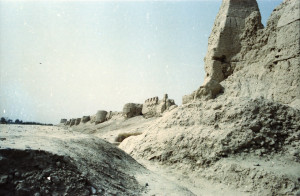
Well, you guessed it; he brought the hordes down to visit on Balkh, but not like other times. No, I think it was a very bad day for the Hashishin. Very bad indeed. The town was leveled. It wasn’t just sacked, it was totally obliterated. This was a massive city and there is little more than a few feet of wall and some housing foundation left. Bones can still to this day be found scattered in the ruins. No, this was a total annihilation of a people, men, women, and children. Those that were left alive were the disciples of Baba Koo left only to tell the tale.
The people of the time would never go back, and built the current Balkh far away from the outskirts of Old Balkh.
I learned a new chant from these old Charsi in the tomb, “Charsi Cabina Marci,” “A hash smoker never dies alone.” I thought at the time, and for many years after, that it meant something quite nice. That maybe the brotherhood of man shares in the spirituality of the herb so his inner being is joined with his brothers even after death, we all feel for each other. As usual, reality is a bit different. Recently an Afghan brother related the real meaning. A Charsi will not just die; he will fight like no other and take as many with him as he can. A Charsi will not die alone. So much for romanticism!
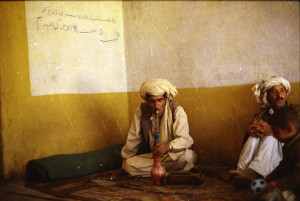 It was now getting around 2pm and we headed back to the new village of Balkh to eat at a local restaurant. We entered the larger of the establishments that surrounded the town center square because of its abundant windows and well-lit tables. The large wooden tables and bench chairs were more like crude park benches and contrast with the black and white clay tile floors and the light green walls. There must be some thing about green or tan walls in Afghanistan. Maybe the paint is cheap? It is the main decorator color for the country, and part of the flag.
It was now getting around 2pm and we headed back to the new village of Balkh to eat at a local restaurant. We entered the larger of the establishments that surrounded the town center square because of its abundant windows and well-lit tables. The large wooden tables and bench chairs were more like crude park benches and contrast with the black and white clay tile floors and the light green walls. There must be some thing about green or tan walls in Afghanistan. Maybe the paint is cheap? It is the main decorator color for the country, and part of the flag.
We sit at one of the “booths.” They are raised platforms, perhaps 6 or 7 feet square and about 2 feet off the ground covered in oriental carpets and draped in hand-made local curtains of satin and silk cloth. All around the booth are plump-carpeted pillows to sit and lean on; true Arabian dream stuff. We sit in one with a view of the whole restaurant, which is empty except for one local Afghani drinking his chai.
I can’t understand Parsi or Pushta yet and we somehow order lamb with a cheese and yogurt topping. It is a dish special to the region and it is well received. A cup of chai and a couple of large joints later, we are back on the road to catch the sunset back in Mazar by the Mosque.
The wonderful military road is taking me back easily to Mazar for a night of Hubble-Bubble and the events of the day were aglow around us all. In the distance I saw something near the road, a man. As we neared he seemed like he was going to cross the road. Old Bedouin tribesman, with his walking staff, they are all over the country. I slow the Benz a bit to 70mph, but it seems as though this guy may be trying to get between Mazar and me. I go off to the right, but he goes off to the right, I go off to the left, and he goes off to the left. SHIT man! He has left me nowhere to go and now I am SO close, SO fast, there is nowhere to go! The choice is: kill the Afghan or, run off the road! Actually I am at the end of a bridge! Damn! Let’s get to the end of the bridge, put the pedal to the metal! Better chance of living NOT going into the riverbed at the deepest. Got to get over the culvert! That bastard camel farmer is now stopped in the middle of the road, staring out; there is no stopping the car.
We are flying down the road, on the bridge. There is nowhere to go, my THC- riddled brain was working on smoke and oil and I had one goal: the end of the bridge and the chance of life. I got the car to the end of the bridge. It was only a bridge over a dried riverbed, a flood bridge, but still 25 feet down to dry land. Boom! We hit the edge and went flying, shit! The Benz was airborne and heading out over the dried river, no road in sight to deter its flight. The Afghan was safe. But we were all much higher than we expected …
